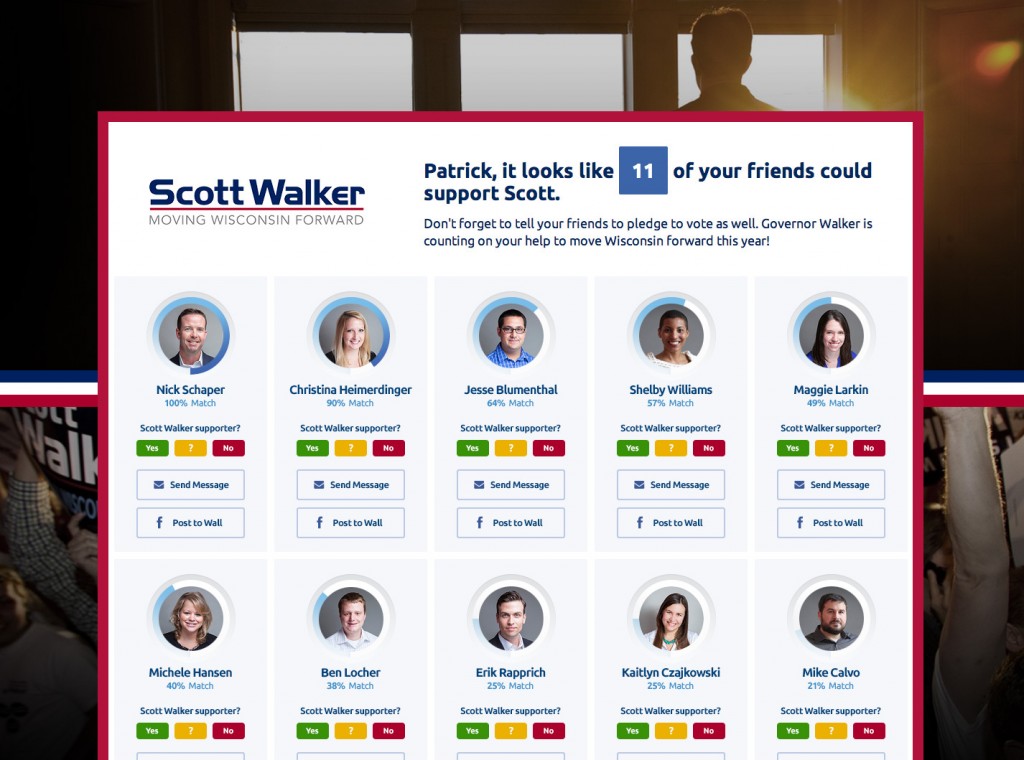Using social media to identify and turn out voters was called “the most groundbreaking piece of technology developed” during the 2012 election. Now, we’re bringing Social Targeting to leading 2014 campaigns, starting with Wisconsin Gov. Scott Walker’s re-election effort.
Social Targeting brings the same analytics and microtargeting scores used to target voters offline to the digital space. In a first, social data is being combined with offline voter data to deliver the most relevant and complete results for each potential new supporter.
Connect with Scott Walker’s new Pledge to Vote app, and if you have friends in Wisconsin who match, you’ll see them sorted by their personalized score. This expands the reach of typical voter targeting by factoring in relevant social data points — netting more results than a typical offline-to-online match could. You can then contact those friends via Facebook message or wall post.
We’re also introducing the ability to identify your friends as supporters once you’ve contacted them, which you can see within each friend’s card. Quick survey functionality like this can be used to collect feedback on any question — including support for a candidate, an event, or a product.
When it comes to persuading someone to vote, nothing beats a personalized recommendation from a friend. These conversations happen all the time in the real world, and technology like Social Targeting allows us to quantify and understand those interactions.
A development like this is also critical in light of the changing nature of voter contact. Many campaigns report phone response rates in the single digits, particularly as they are prohibited by law from marketing to cell phones. The number of landline-only phones has declined from more than 40 percent of households in 2003 to 7 percent in 2013, while the number that relies primarily or only on cell phones has gone from 4.8 to 55.7 percent in the same period, with 38 percent of the population exclusively on mobile.
It’s no wonder that in 2012, the Obama campaign found that just 50 percent of its target voters could be reached on the phone, while 85 percent could potentially be reached through digital tools.
No one technology will replace traditional forms of voter contact. But we’re now starting to see a future where digital tools are a significant part of the voter contact mix. At Engage, we’re proud to continue to build groundbreaking applications that bring the same targeting and modeling offline marketers use to the digital space. And we’re even more excited about what we can do for your organization next.



